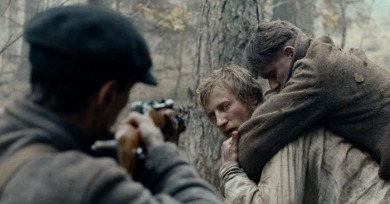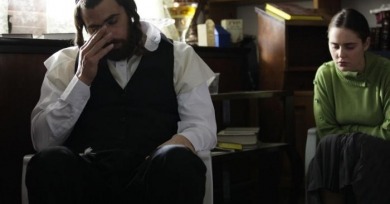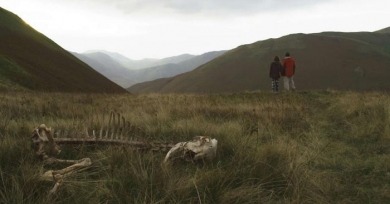Reviews
The degree to which the film stands on the shoulders of other more recent science fiction and superhero flicks borders on consumer fraud.
Sergei Loznitsa’s In the Fog is stimulating viewing for those among us still on the lookout for auteurs of serious moral and aesthetic intent.
The most significant quality of Joss Whedon’s modern adaptation of Shakespeare’s Much Ado About Nothing is not its black-and-white palette, small self-financed budget, or the fact that the crew shot it in just under a fortnight at his house, but that this is the first film Whedon has directed that he hasn’t also written.
It’s a film which might feel at times like a patchwork of dozens of others, but has a singular quality which transcends almost any comparison: it is built of sound.
You Ain’t Seen Nothin’ Yet proves especially fascinating for both its trapdoor narrative logistics and meta correspondences.
Before Midnight is the first of Richard Linklater’s films charting the ever-expanding romance of Celine (Julie Delpy) and Jesse (Ethan Hawke) that hints at a silence between the lines.
It is easy to get caught up in the atmosphere of Rama Burshtein’s feature debut, which is largely set in the homes and meeting places of the tight-knit Israeli Orthodox Jewish community, always quietly bubbling with constant conversation or prayer.
Whether it’s her reportedly semi-autobiographical contributions to the screenplay or her off-screen relationship with Baumbach, Gerwig’s presence certainly figures vitally in the fact that Frances Ha is his most sprightly and least rancorous film yet.
Fitzgerald’s slim, devastating masterwork is, finally, a novel of America masquerading as a half-baked tragic love story, where the movie is an overwrought, though not unforgivable, tragic love story with no interest in or insight into America.
Wheatley reacquaints himself with his roots in television humor and presents us with something more straightforward than before (there is no doubt you are watching a comedy from start to finish) but which still allows him room to indulge his predilections for unpredictability and all-out gore.
The ecstatic cinematic rhapsody that is Post Tenebras Lux is not for everybody—but noting this is not to suggest that it couldn’t be.
The film relies not on a formula of revelation by way of confrontation, but on its own trust in old-fashioned eternal truths. How does a film that makes such an ideal out of constancy drum up enough conflict and ambiguity to be compelling?
Love is what everybody needs in Susanne Bier’s profoundly (if accidentally) mean-spirited new film. And love is what they get—that is, if they happen to be either a good-hearted hairdresser undergoing cancer treatments or a widowed businessman with short tempers and untapped wells of sympathy.
Something in the Air is indeed a little anodyne, a bit blandly lovely both in its casting and in its seventies-inflected cinematography. It’s also fleet and fluid, which are welcome qualities and recognizable hallmarks of Assayas’s cinema over the years to boot.













